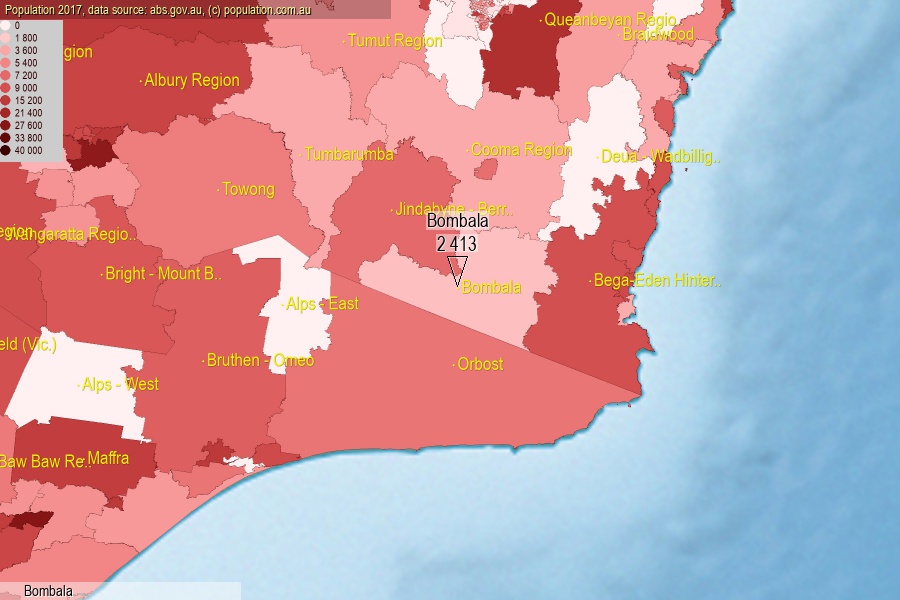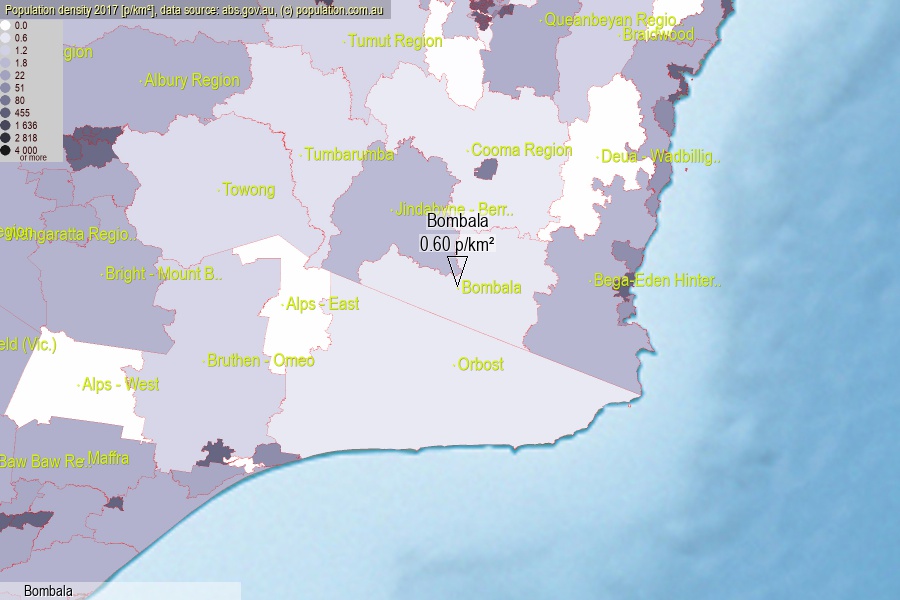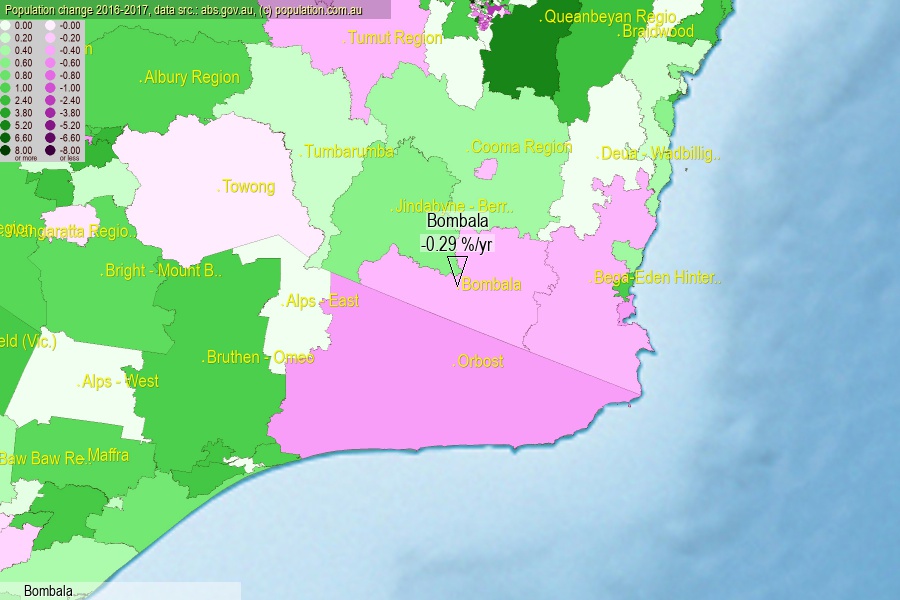 population.com.au
population.com.auLast official estimated population of Bombala (as Statistical Area Level 2) was 2 413 people (on 2017-06-30)[2]. This was 0.01% of total Australian population and 0.03% of NSW population. Area of Bombala is 3 989.40 km², in this year population density was 0.60 p/km² . If population growth rate would be same as in period 2016-2017 (-0.29%/yr), Bombala population in 2025 would be 2 358. [0]



Click to enlarge. Bombala is located in the center of the images.
Population [people], population density [p./km²] and population change [%/year] [2]
View borders » (new window) [4]
[1991-1992] +0.57 %/Yr.
[1992-1993] -0.28 %/Yr.
[1993-1994] -1.10 %/Yr.
[1994-1995] -1.43 %/Yr.
[1995-1996] -0.74 %/Yr.
[1996-1997] -3.15 %/Yr.
[1997-1998] -2.35 %/Yr.
[1998-1999] -3.85 %/Yr.
[1999-2000] -3.61 %/Yr.
[2000-2001] -2.85 %/Yr.
[2001-2002] -0.19 %/Yr.
[2002-2003] -1.03 %/Yr.
[2003-2004] -0.54 %/Yr.
[2004-2005] +0.04 %/Yr.
[2005-2006] +0.47 %/Yr.
[2006-2007] -0.85 %/Yr.
[2007-2008] -1.29 %/Yr.
[2008-2009] -0.71 %/Yr.
[2009-2010] -0.52 %/Yr.
[2010-2011] -0.76 %/Yr.
[2011-2012] -0.89 %/Yr.
[2012-2013] -0.45 %/Yr.
[2013-2014] -0.57 %/Yr.
[2014-2015] -0.37 %/Yr.
[2015-2016] -0.33 %/Yr.
[2016-2017] -0.29 %/Yr.
[0] Calculated with linear interpolation from officially estimated population
[1] Read more about SA2 and Australian Statistical Geography Standard (ASGS) on abs.gov.au
[2] Population data from Australian Bureau of Statistics (Population and density: 2017; change: 2016-2017)
[3] Digital Boundaries: Australian Statistical Geography Standard (ASGS) 2016.
[4] Border coordinates are simplifyed using Ramer-Douglas-Peucker algorithm.